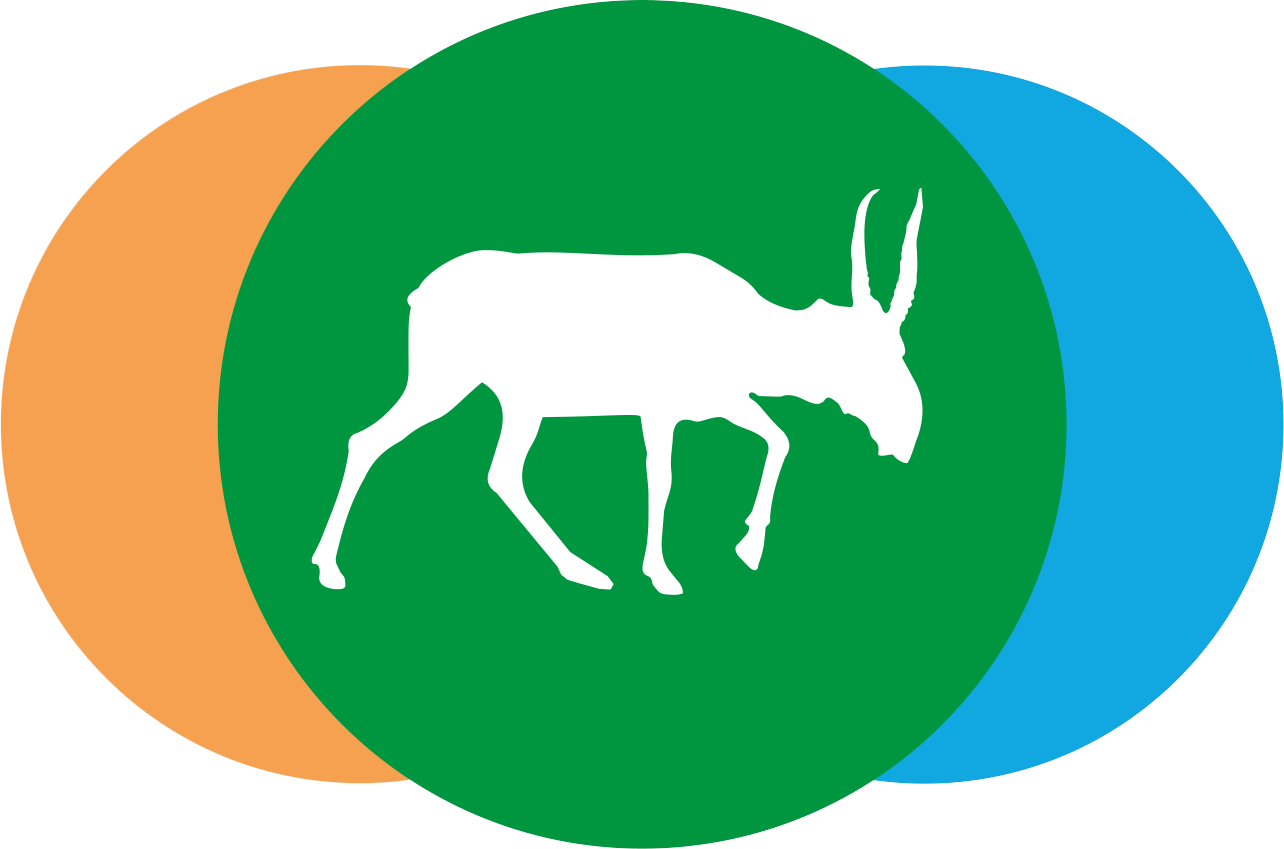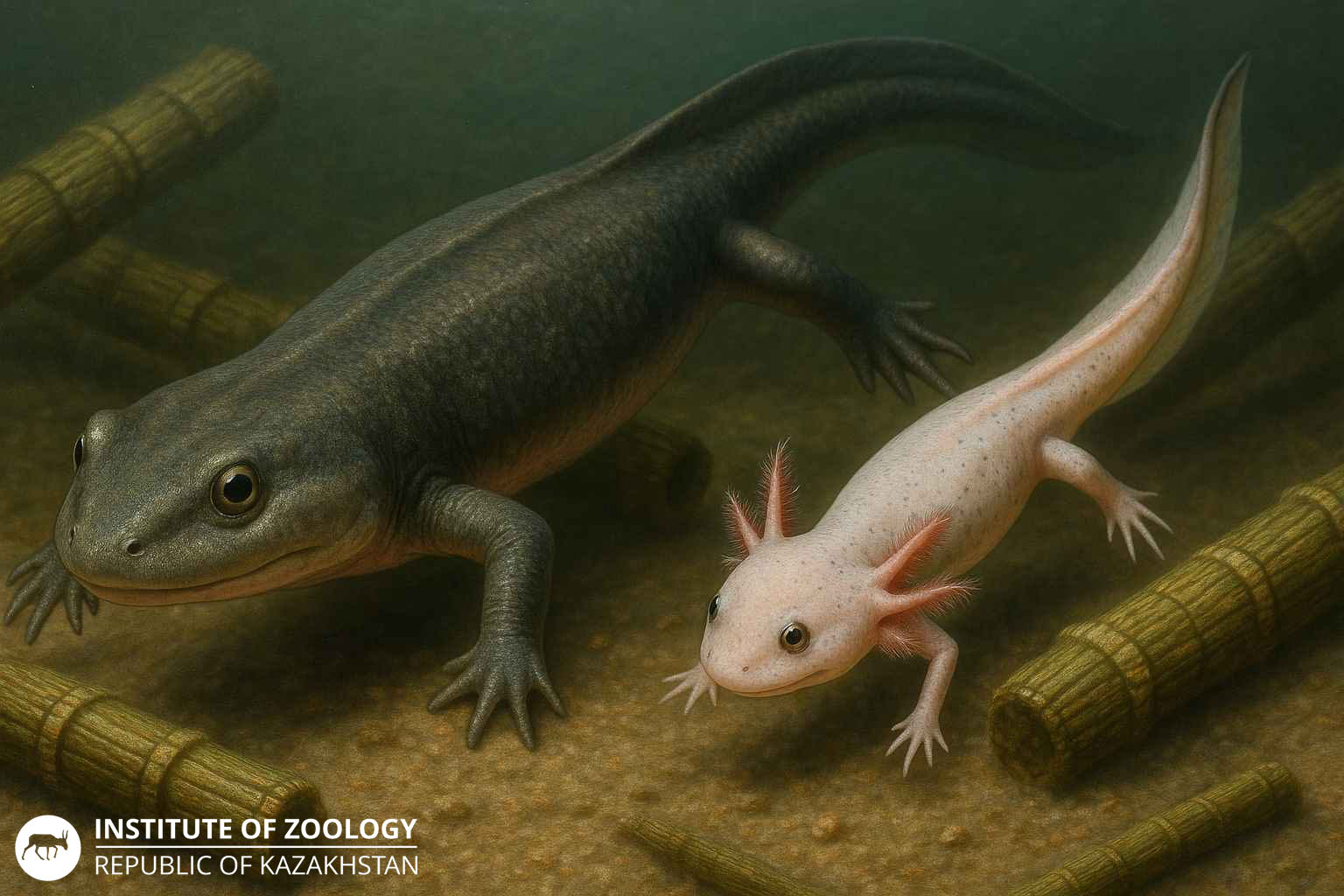From October 4 to 12, the team of the Institute of Zoology of Kazakhstan conducted a short but successful expedition to the Kurty locality in Almaty Region — one of the few continental Paleozoic sites in Kazakhstan. The exposed rocks here date back to the Permian period, about 280 million years old, meaning that the organisms found in Kurty lived long before the age of dinosaurs.
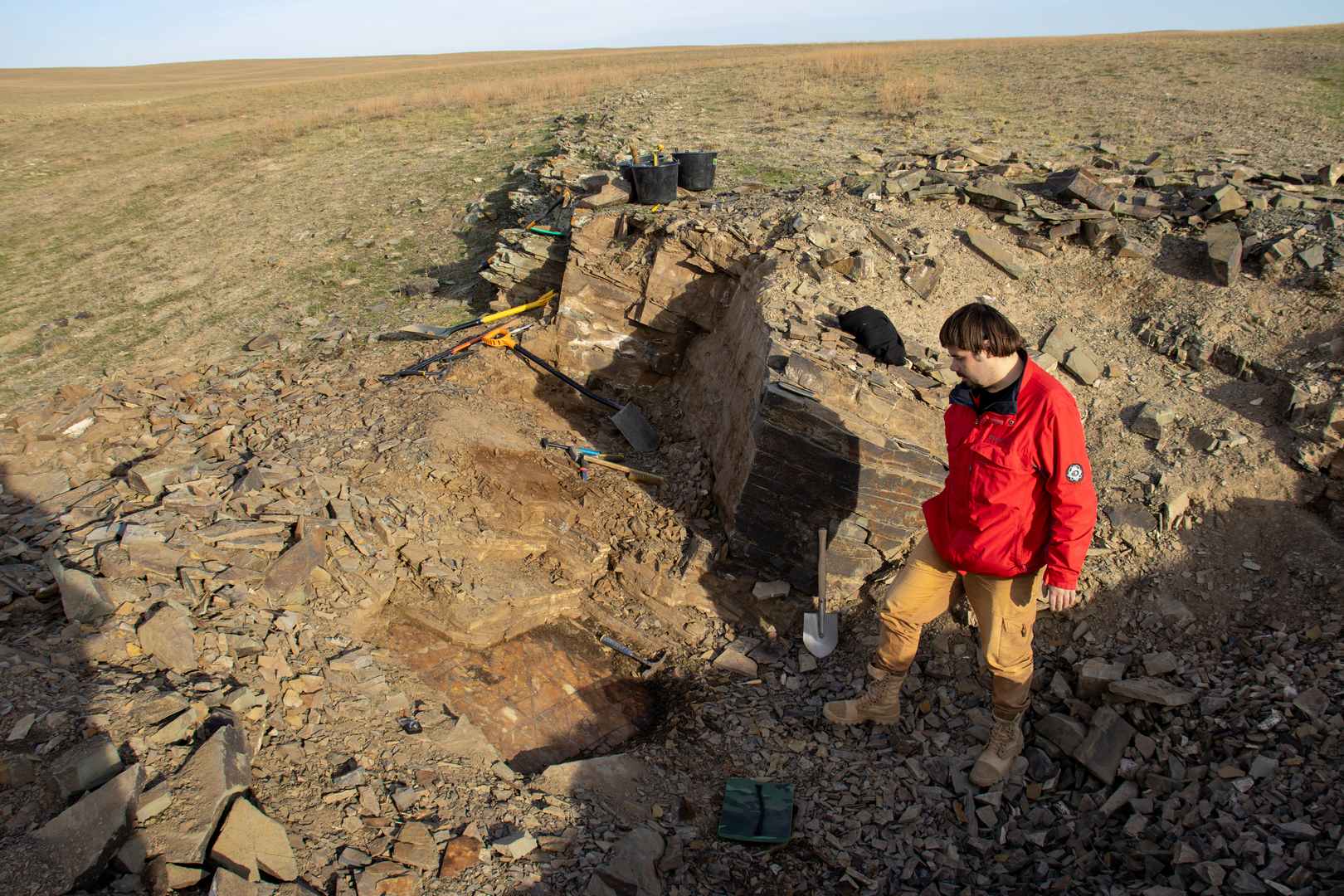
Excavations at Kurty
The remains of early Permian amphibians from the Kurty complex were first discovered in the 1960s during geological surveys. In the 1970s, specialists from the Paleontological Institute of the USSR Academy of Sciences carried out several productive field seasons and collected more than 400 specimens. To their surprise, all the fossils belonged to a single species — Utegenia shpinari. The causes of such a low species diversity remain under discussion. More interestingly, Kurty preserves an almost complete ontogenetic series, from juveniles about 2 cm long to adults reaching 30 cm, making it an exceptional site for studying the individual development of Paleozoic amphibians.
Utegenia was a tailed amphibian from the order Seymouriamorpha, living in shallow freshwater bodies. Adults reached 30 cm in length and resembled modern newts and salamanders, while young individuals had external gills like axolotls. Unfortunately, the larval (tadpole) stage remains unknown — their skeletons were cartilaginous and did not fossilize.
After the 1970s fieldwork, the exact coordinates of the site were lost. The outcrop lies in an endless steppe with few landmarks, and GPS technology did not yet exist. Rediscovering the site turned into a detective story. Field diaries from participants in excavations dating back 50 years were found in the archives, and using scant clues from ancient records and satellite images, the point was located near a village of the same name.
The expedition took place at the very end of the field season, in early October. The weather was favorable — no rain or snow, +10°C during the day and frost at night. Mornings began by breaking ice in the washbasin. The camp stood just 20 meters from the excavation site, combining tents, storage, kitchen, rest area, and laboratory under one canopy. Most daylight hours were spent excavating the productive layer, while long October evenings were dedicated to measuring and packing specimens.

The productive layer reaches up to one meter thick and is excavated layer by layer 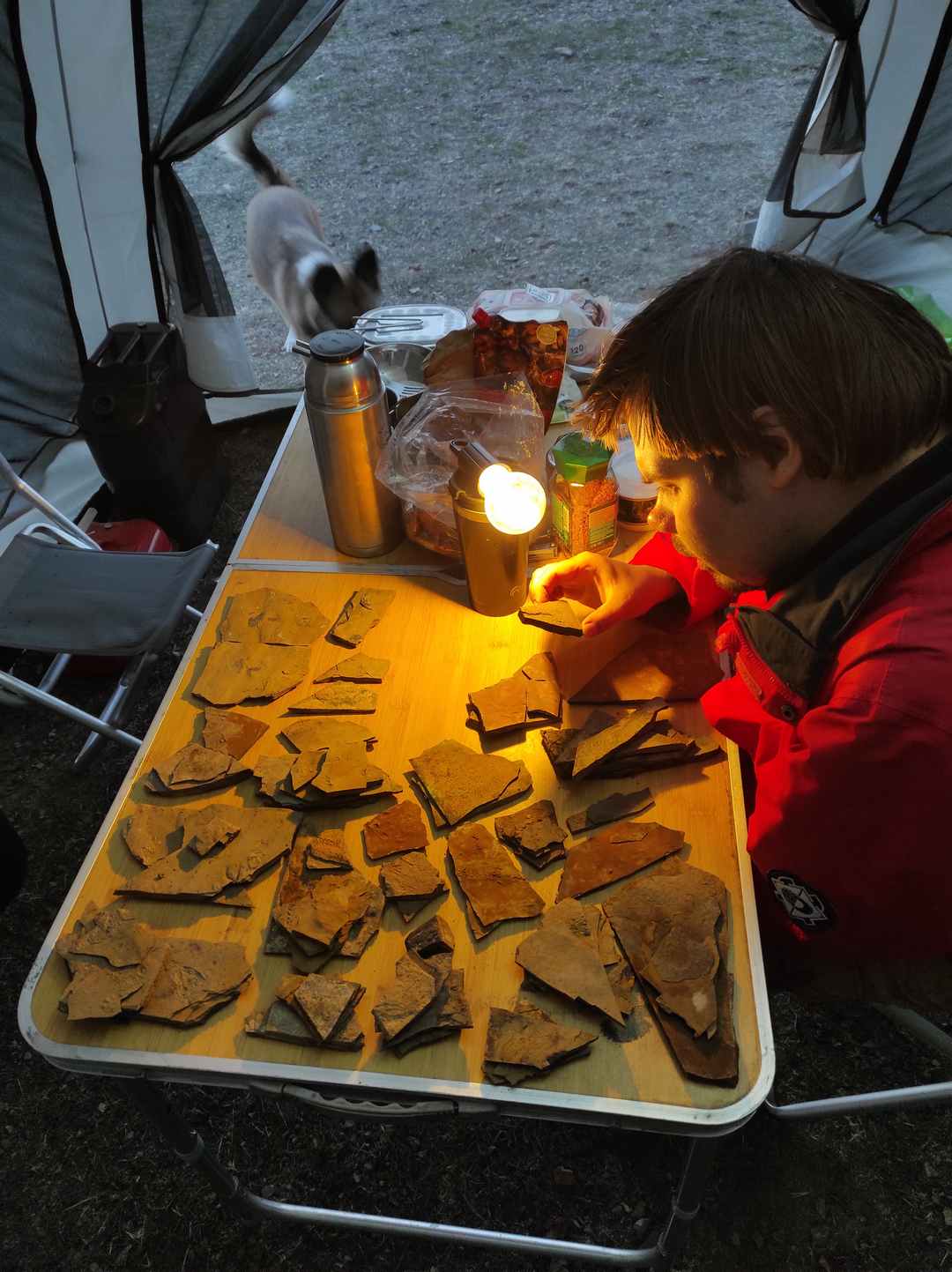
After sunset, fieldwork ends and laboratory processing begins
Modern technology greatly facilitates fieldwork. We had power from a small generator, gas for cooking, warm sleeping bags, and — for the first time — tested a satellite communication system that provided stable internet access. In such remote areas with no mobile coverage, it proved invaluable. And, of course, GPS ensured that this important site would never be lost again.
Preparing for a week of full isolation, we worried about running out of food, water, or fuel — but not about packing materials! The number of finds exceeded all expectations. Paper and film ran out by the third day. In total, about 120 new skeletons (preliminarily identified as Utegenia shpinari) were collected, along with impressions of ancient horsetails (calamites). In some layers, bone density reached up to eight skeletons per square meter!
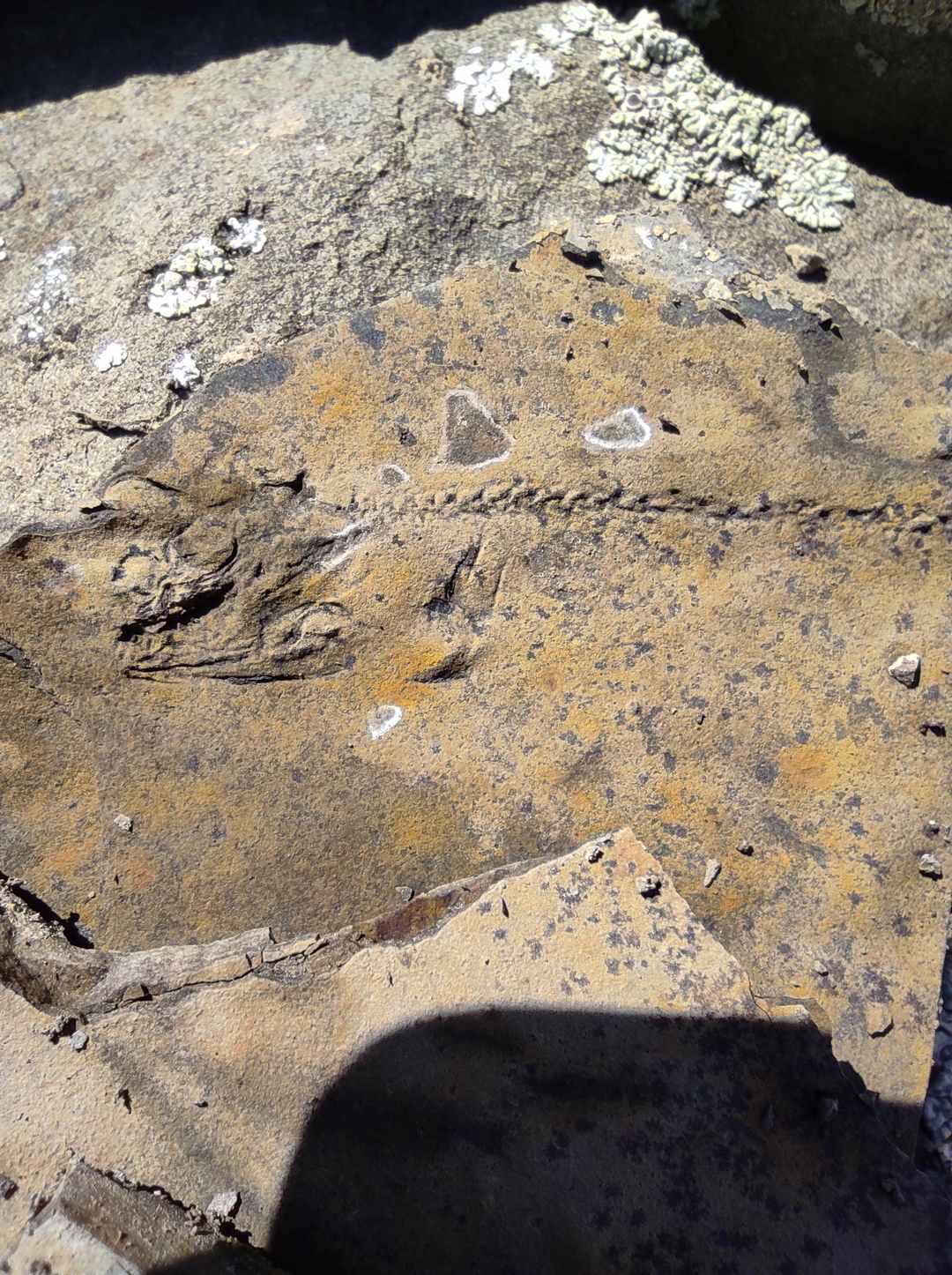
Amphibian bones lie under a crust of rock — fine anatomy will be studied later during preparation 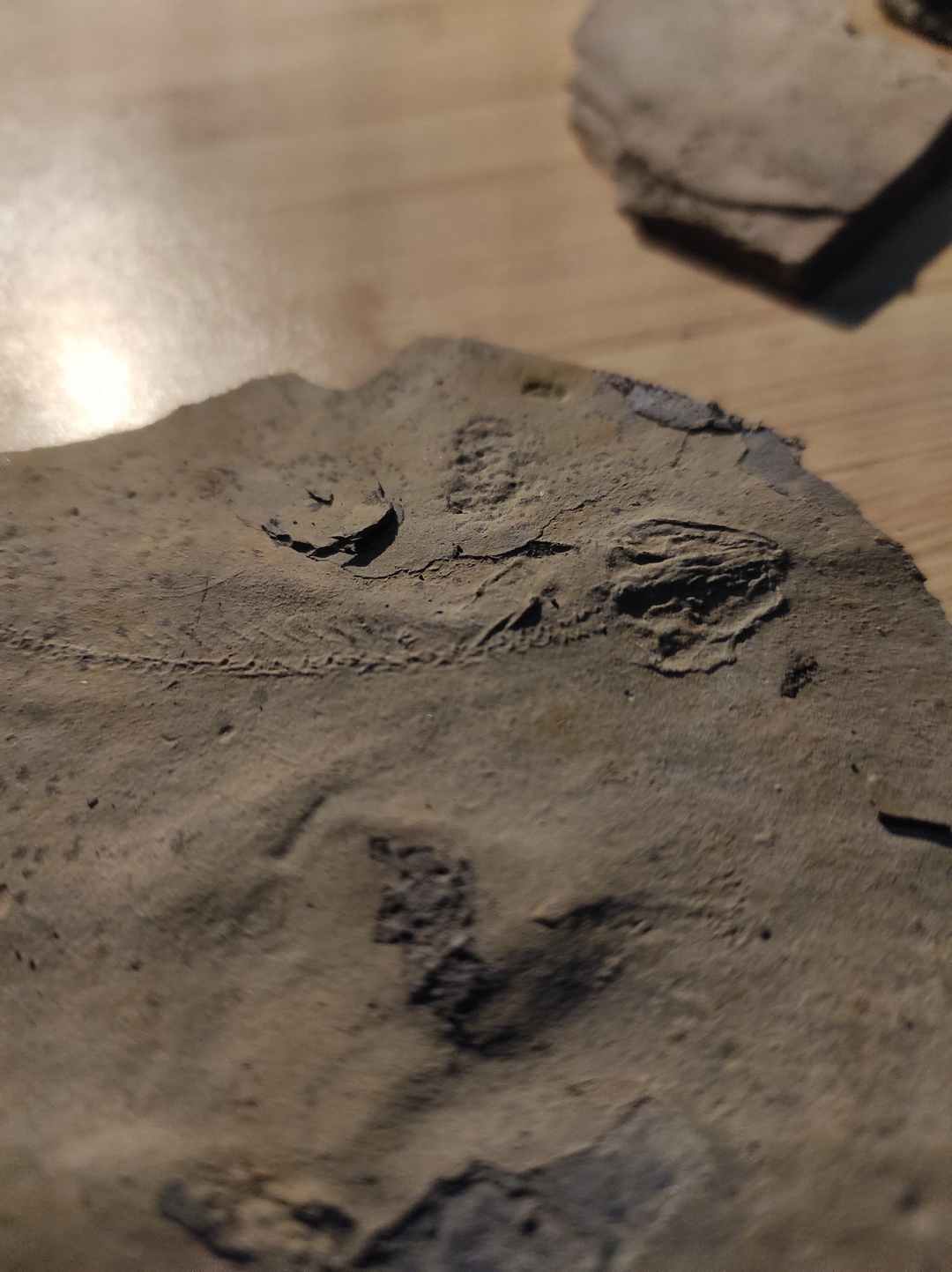
Utegenia shpinari skeleton

Skin impression of Utegenia
Kurty is more than just an interesting site — it is key to understanding the biology and ecology of early tetrapods in Central Asia. Forgotten for decades, it is now being reintroduced into scientific focus by the Institute of Zoology of Kazakhstan, which is forming its own national collection of Permian fauna. This is an important step in developing domestic paleontology and establishing a modern research base comparable to the world’s leading centers.
The expedition was organized by Dmitry Kopylov, Head of the Laboratory of Paleozoology of the Institute of Zoology of Kazakhstan; Anton Ulyakhin, Researcher at the Paleontological Institute RAS; and adjunct researchers of the Institute, Pyotr Haiduk and Andrey Rossiyskiy.
The work was carried out within the framework of the scientific program BR21882199 “Cadastre of Wild Animals of the Arid Territories of the Balkhash-Alakol Basin with an Assessment of Threats to Their Conservation and Sustainable Use.”
Photo: Dmitry Kopylov
22.10.2025
